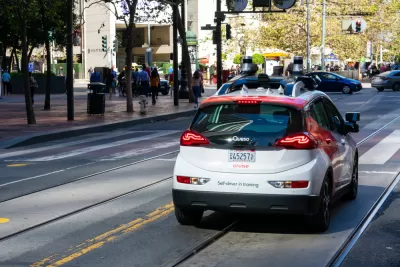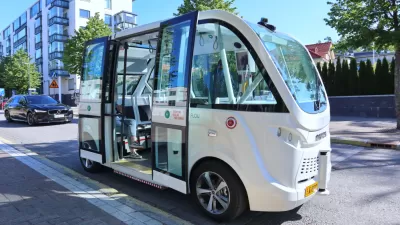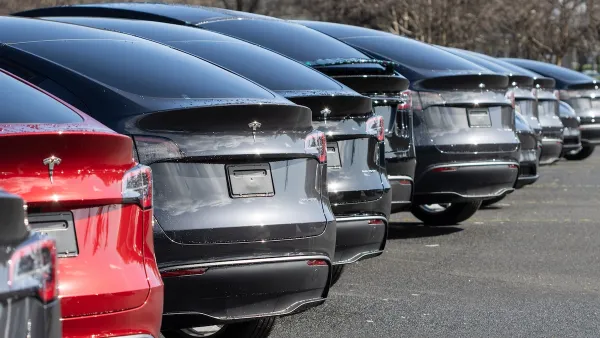With self-driving vehicles allowed on public streets in 20 states, federal regulators are beginning to scrutinize the industry for safety concerns.

The National Highway Traffic Safety Administration (NHTSA) is investigating self-driving taxis from General Motors subsidiary Cruise, which have been involved in multiple incidents that resulted in unsafe conditions. As Dan Zukowski explains in Smart Cities Dive, “These events, NHTSA said, could lead to dangerous situations for passengers such as their having to exit the vehicle in traffic or leave a vehicle stranded in an intersection.”
According to Zukowski, “NHTSA last year ordered manufacturers and operators to report crashes involving vehicles equipped with automated driving systems; it is also investigating 830,000 Tesla cars equipped with the Autopilot driver assistance system.” Between July 2021 and May 2022, AVs were involved in 130 crashes. Today, 20 states allow the testing or deployment of automated vehicles without a human driver present. “While federal regulations limit the number of fully automated vehicles an operator can deploy, there are no federal safety regulations specific to autonomous vehicle operational standards.”
Volkswagen and Ford recently pulled support from their autonomous vehicle investments. As Ford CEO Jim Farley explained in October, “profitable, fully autonomous vehicles at scale are a long way off.”
FULL STORY: Federal safety regulators begin investigation into self-driving taxis

Maui's Vacation Rental Debate Turns Ugly
Verbal attacks, misinformation campaigns and fistfights plague a high-stakes debate to convert thousands of vacation rentals into long-term housing.

Planetizen Federal Action Tracker
A weekly monitor of how Trump’s orders and actions are impacting planners and planning in America.

In Urban Planning, AI Prompting Could be the New Design Thinking
Creativity has long been key to great urban design. What if we see AI as our new creative partner?

King County Supportive Housing Program Offers Hope for Unhoused Residents
The county is taking a ‘Housing First’ approach that prioritizes getting people into housing, then offering wraparound supportive services.

Researchers Use AI to Get Clearer Picture of US Housing
Analysts are using artificial intelligence to supercharge their research by allowing them to comb through data faster. Though these AI tools can be error prone, they save time and housing researchers are optimistic about the future.

Making Shared Micromobility More Inclusive
Cities and shared mobility system operators can do more to include people with disabilities in planning and operations, per a new report.
Urban Design for Planners 1: Software Tools
This six-course series explores essential urban design concepts using open source software and equips planners with the tools they need to participate fully in the urban design process.
Planning for Universal Design
Learn the tools for implementing Universal Design in planning regulations.
planning NEXT
Appalachian Highlands Housing Partners
Mpact (founded as Rail~Volution)
City of Camden Redevelopment Agency
City of Astoria
City of Portland
City of Laramie





























